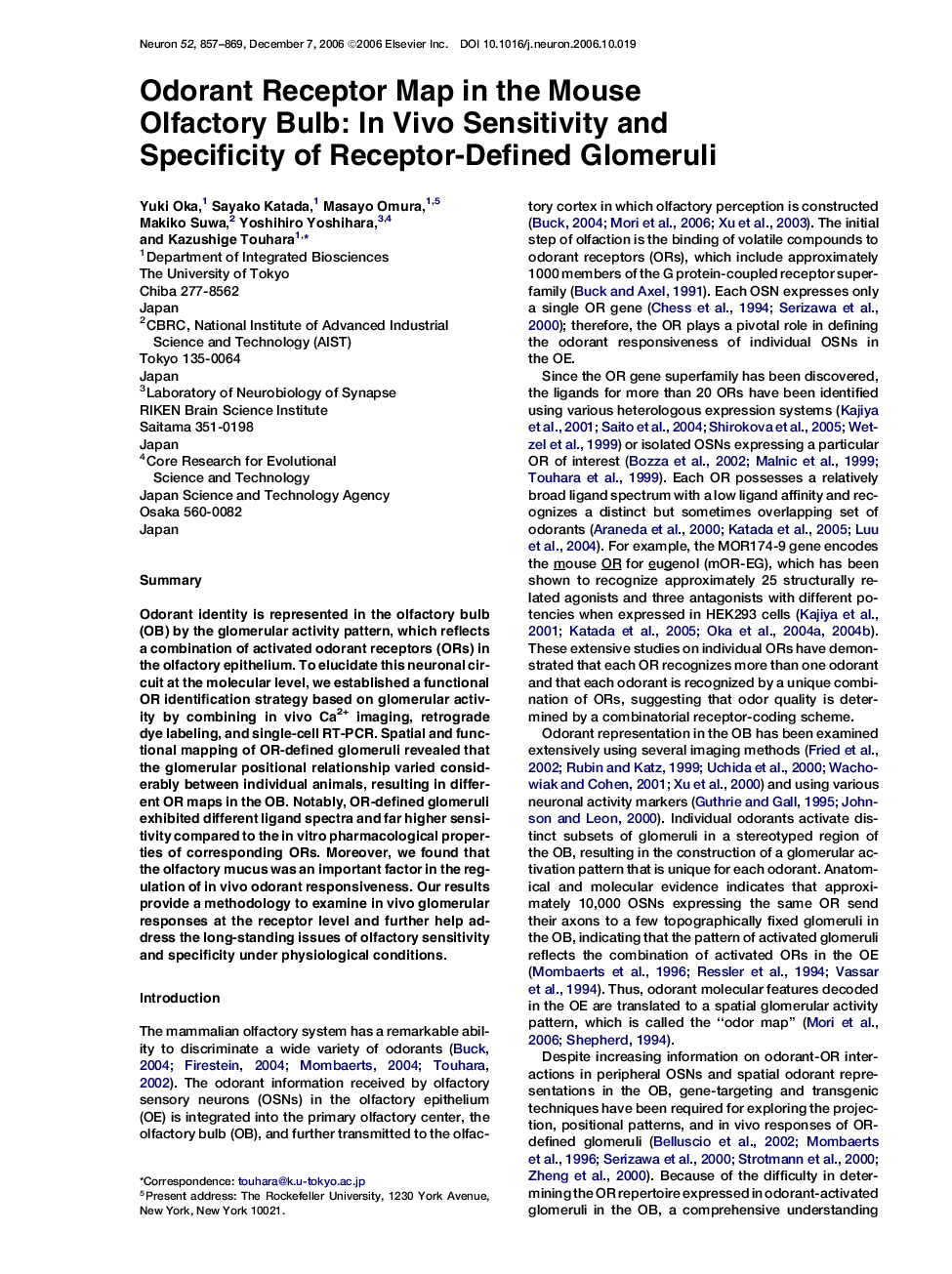| Article ID | Journal | Published Year | Pages | File Type |
|---|---|---|---|---|
| 4323257 | Neuron | 2006 | 13 Pages |
SummaryOdorant identity is represented in the olfactory bulb (OB) by the glomerular activity pattern, which reflects a combination of activated odorant receptors (ORs) in the olfactory epithelium. To elucidate this neuronal circuit at the molecular level, we established a functional OR identification strategy based on glomerular activity by combining in vivo Ca2+ imaging, retrograde dye labeling, and single-cell RT-PCR. Spatial and functional mapping of OR-defined glomeruli revealed that the glomerular positional relationship varied considerably between individual animals, resulting in different OR maps in the OB. Notably, OR-defined glomeruli exhibited different ligand spectra and far higher sensitivity compared to the in vitro pharmacological properties of corresponding ORs. Moreover, we found that the olfactory mucus was an important factor in the regulation of in vivo odorant responsiveness. Our results provide a methodology to examine in vivo glomerular responses at the receptor level and further help address the long-standing issues of olfactory sensitivity and specificity under physiological conditions.
